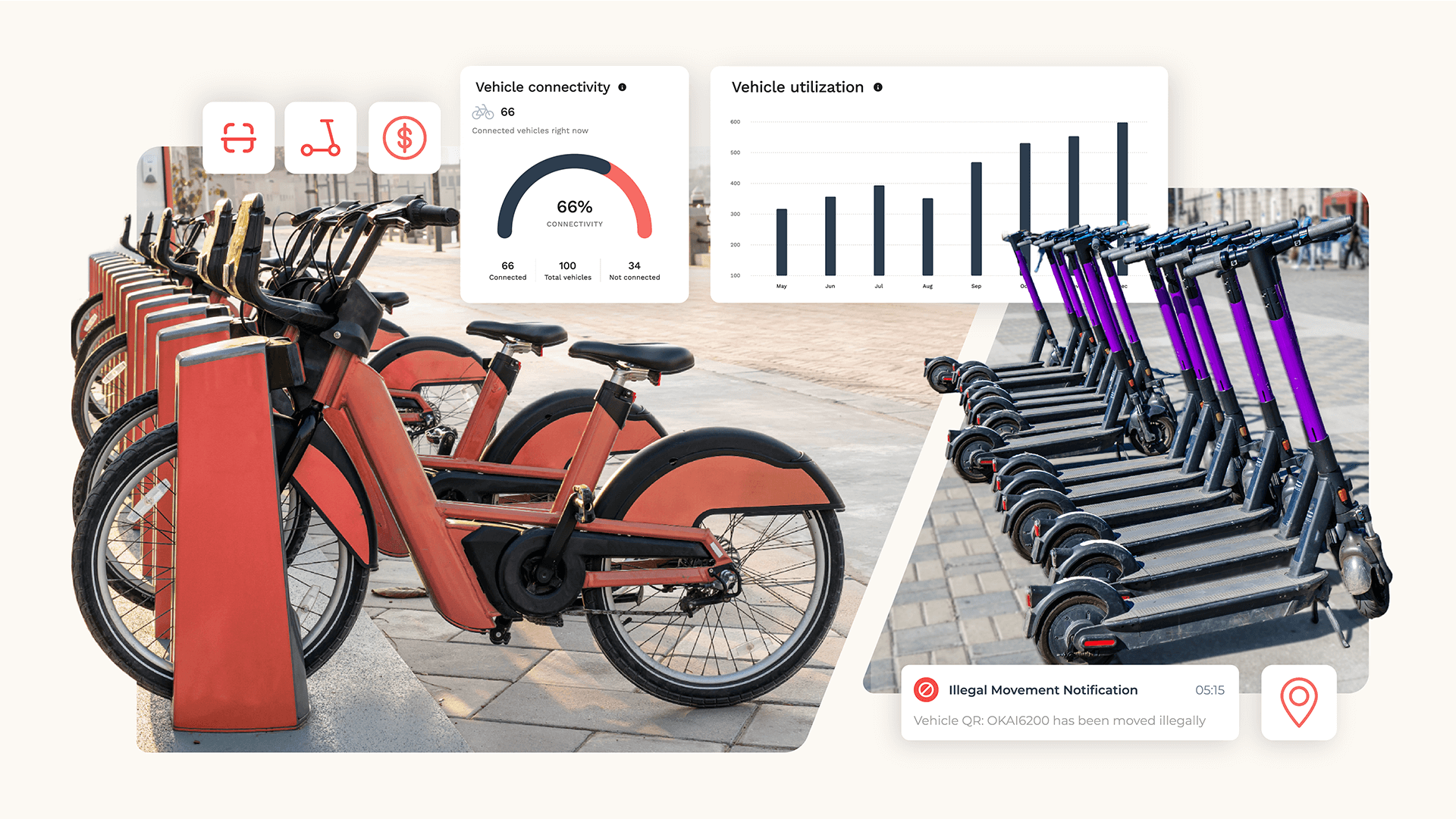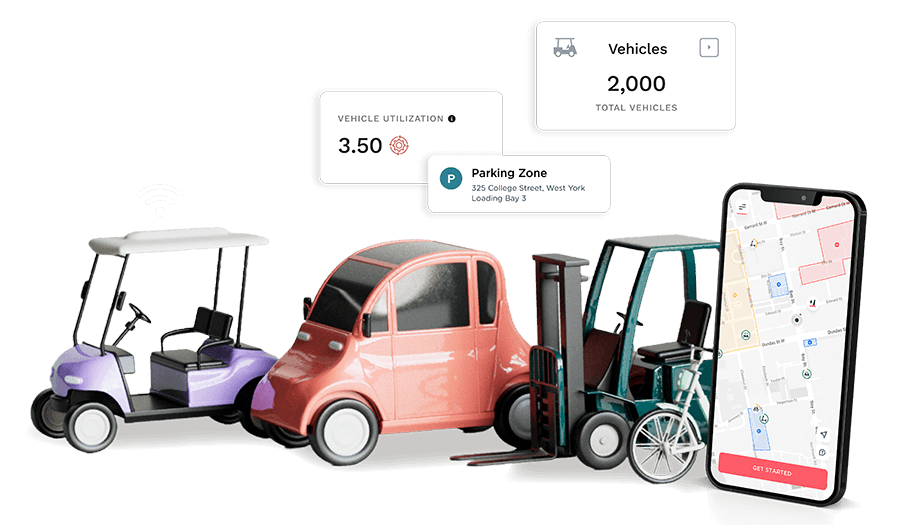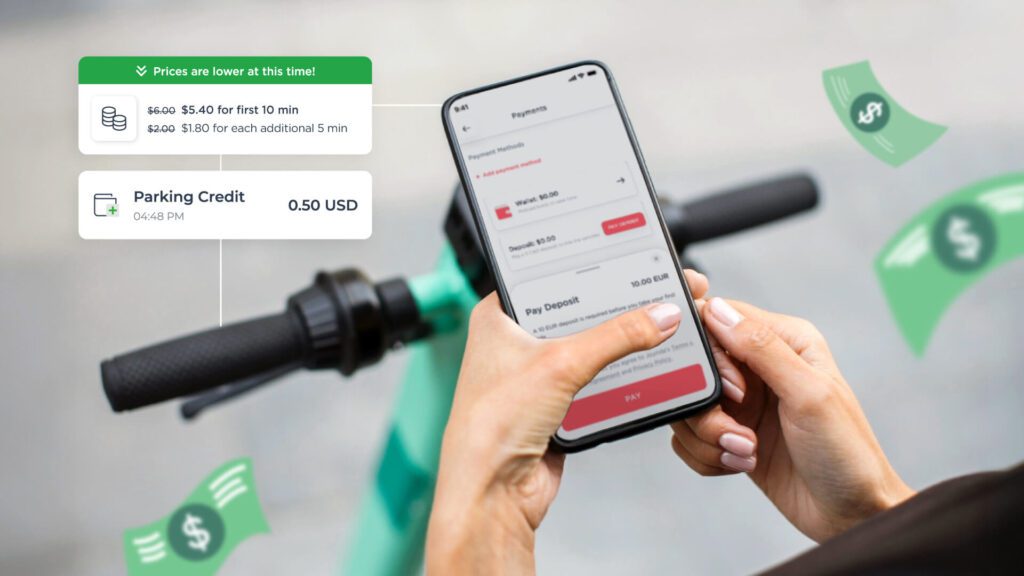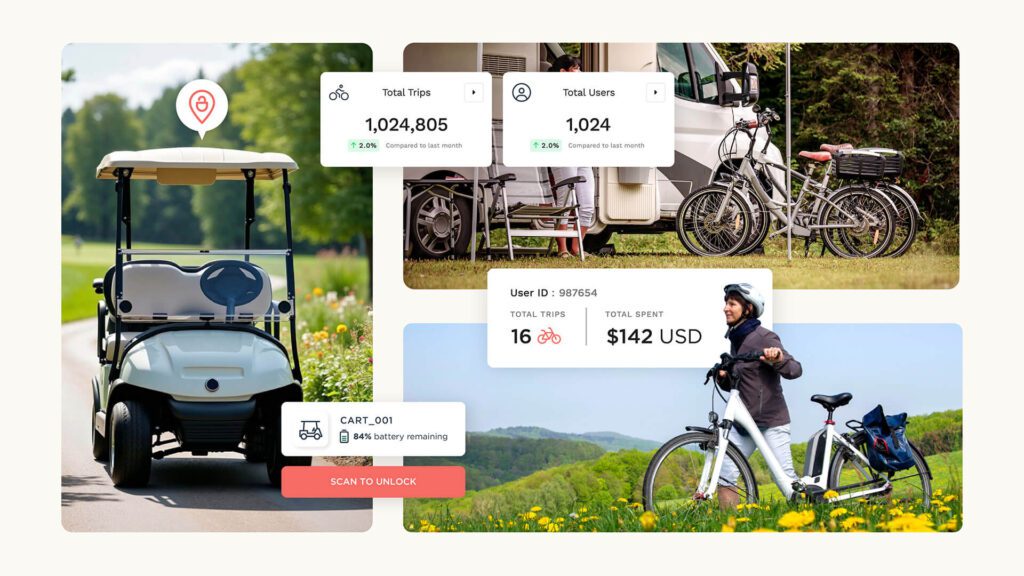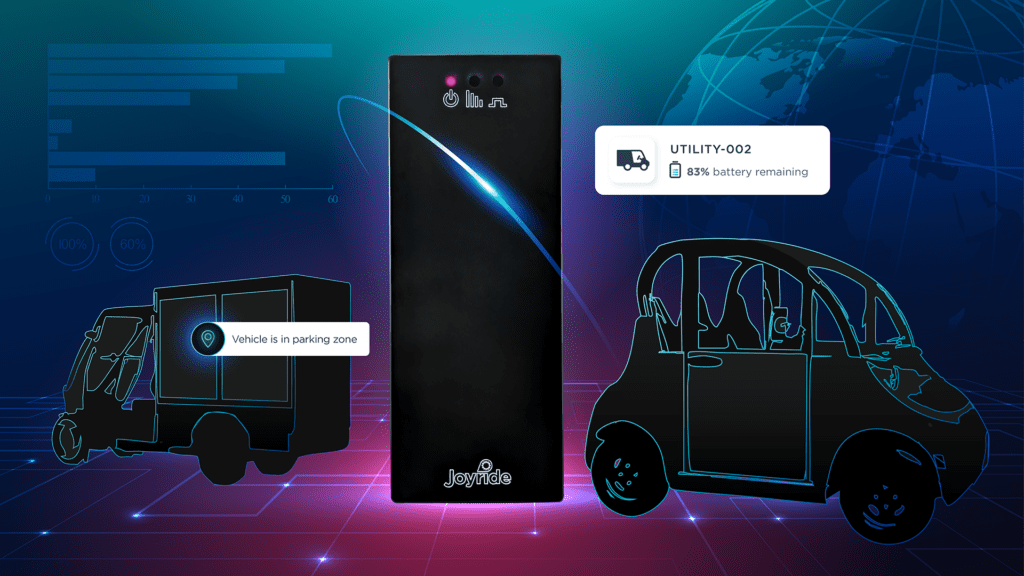Success in shared mobility isn’t about having the most vehicles or the biggest ops team. What sets elite fleet operators apart is that every scooter, bike and golf cart is deployed with purpose—driving toward a clear revenue goal and tracked through real-time data.
Across the board, our highest-performing partners share a few key traits, so in this post, we’re diving into the top 4 proven tactics of high-performing operators—and how you can use the same methods to drive retention, increase utilization and build a high-margin shared mobility business.
How to build an elite fleet management team
Across the board, Joyride’s highest-performing partners share a few key traits:
- They run lean, automated operations
- They treat fleets like financial systems
- They invest in the user experience
- They monetize more than just rides
1. They run lean, automated operations
Top operators don’t throw money and labor at problems—they use intelligent fleet software to automate solutions. From dynamic pricing and underpayment recovery systems, to auto-ending idle rides and flagging low-battery vehicles, elite fleets rely on systemized workflows to stay lean.
Fleet automation examples with Joyride
Joyride’s platform allows fleet operators to automate key parts of their business, improving both efficiency and the user experience. Our operators rely on features such as:
Smart Zone Management & Parking Incentives
Using geofencing tools, operators can set minimum and maximum vehicle thresholds for parking zones. Going a step further, Parking Incentive can trigger when a zone is under-supplied—offering bonus ride credits to users who park there.
Dynamic Pricing Rules
Dynamic Pricing is another tool to encourage organic fleet redistribution. This feature automatically adjusts ride prices by hour and day of the week. For instance:
- Increase pricing by 15% between 4 PM and 9 PM on weekends
- Offer off-peak discounts to drive usage during slower hours
Idle Vehicle Management & Grace Periods
Automations aren’t just for ops–they can implement rider-friendly policies while reducing support tickets. For example:
- Auto-end Idle Ride – Locks a vehicle after a period of inactivity to prevent theft or overbilling
- Grace Period – Won’t charge for quick start-and-stop trips, minimizing refund requests and support tickets
- Joyride’s External Support Integration enables operators to connect a chatbot or external helpdesk, such as Mavenoid or Zendesk, to help troubleshoot issues before human intervention
TRY THIS
Audit the operational workflows of your team. Don’t change anything yet–simply observe and take notes. Are field teams logging activities in a spreadsheet, or are they using an Operator App to act and track at once? Is rebalancing and battery swapping guided by intuition, or does an algorithm identify the most efficient route?
Every repetitive task is a candidate for automation—and every automation makes your business more efficient and scalable.
2. They treat fleets like financial systems
Elite fleet management teams don’t see vehicles simply as equipment. Each scooter or bike represents a micro-P&L, with acquisition costs, maintenance expenses and revenue targets.
Fleet financial analysis examples
Joyride’s Analytics Dashboard enables operators to approach fleet decisions like a CFO. Instead of guessing, they’re guided by data to fine-tune operations. Here are some essential metrics to identify underperforming assets, reallocate resources and maximize revenue from high-yield zones:
- Utilization Rate – Total Number of Rides ÷ (Total Number of Vehicles × Time Period)
- RPVPD (Revenue per Vehicle per Day) – A daily snapshot of how much each unit earns
- Trip Completion Rate – Percentage of rides completed without payment, vehicle or connectivity issues
- Trip Ratings – Positive vs. negative user reviews (often tied directly to successful trip completion)
- Negative Balance Users – Total number of users and dollar amount of uncollected payments
- Fleet Revenue vs. Net Revenue – Compares top-line earnings to what’s actually kept after chargebacks, refunds and discounts

Having data is a good start—but knowing how to act on it is the secret sauce.
Take utilization, for example. A healthy benchmark is typically 4–7 rides per vehicle per day. If you’re consistently under 2 rides/day, it’s a red flag that something’s off—whether it’s your deployment strategy, marketing, or operational coverage.
Then there’s RPVPD (Revenue Per Vehicle Per Day), which some operators treat as the twin metric to utilization. High utilization doesn’t mean much if your pricing is too low or discount-heavy. On the flip side, you could have low ride volume but still hit revenue goals if your rides are long or premium-priced.
The key is to monitor multiple metrics daily and adjust in real-time. If you see high utilization but low RPVPD, it’s time to revisit pricing. If RPVPD is solid but utilization is low, maybe you’re not reaching enough users, or fleet distribution needs rethinking.
Elite fleet managers start with data, then apply those insights to the real world. They use GPS heatmaps to pinpoint where rides frequently start and end, then position vehicles in those zones. Another common fleet management tactic is to run A/B tests on deployments–even small shifts in drop-off strategy can meaningfully boost trip volume and daily revenue.
TRY THIS
Using your Joyride dashboard or exported ride data, create a vehicle health score that combines metrics like:
- Total revenue generated per vehicle
- Total trip count per vehicle
- Number of trips to recover purchase price
- Total uptime vs downtime (availability)
- Total maintenance actions and associated costs
Group vehicles into cohorts—by model, purchase year and deployment location—to compare performance more meaningfully. The goal is to identify the lifetime value and break-even point for your assets so you can improve upon it!
3. They invest in the user experience
The best-performing public fleets don’t compete on price—they compete on user experience. Instead of relying on deep discounts, top operators focus on building a reliable, high-quality service that breeds loyalty. This is especially important, since your competition isn’t just another scooter or bikeshare operator—it’s every form of transportation, from Uber to public transportation.
Fleet management tactics for customer experience
Similar to fleet management metrics, Joyride’s Rider App analytics track user interactions. Operators use this data to improve the touchpoints that matter most. For example:
In-App Education for Scooter and Bike Rentals
Support tickets spike when riders are confused or uninformed. High-performing fleets leverage onboarding features, geofencing rules and proactive support to reduce friction.
User Acquisition and Retention
Smart fleet managers know that acquiring a user is only half the battle—retaining them is where long-term growth happens. One of the most important user metrics to track is Days Between Rides (DBR). If DBR is high, you’re likely losing casual riders before they turn into repeat customers.
Joyride’s analytics tools help you take action by segmenting your user base into cohorts like power users, casual riders and one-time users. Users with high DBR and low ride counts can then be targeted with personalized push notifications, ride credits or geo-based offers.
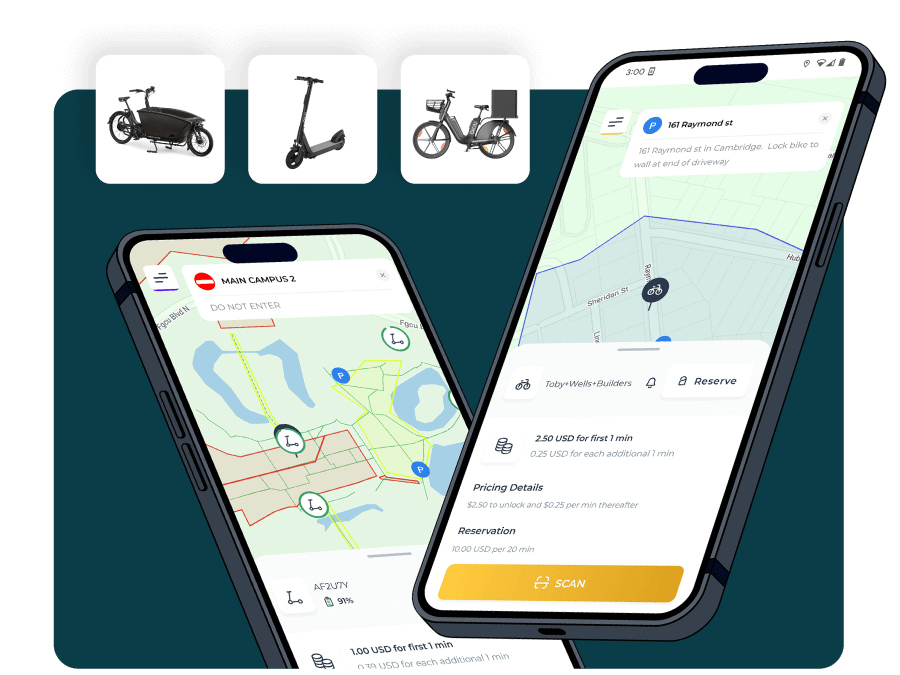
Elite fleet operators know that retention isn’t luck—it’s the result of consistent, data-driven marketing efforts to create habit loops and long-term loyalty.
TRY THIS
Ask a few friends—especially ones who’ve never used your service before—to try renting a vehicle. Watch them go through the process without giving any instructions.
Was it clear how to unlock and park? Were the vehicles charged, clean and easy to locate?
Take note of where they get confused or frustrated. These are your friction points. Fix what you can, then run the test again with someone new. It’s one of the easiest ways to spot (and solve) real user experience gaps.
4. They monetize more than just rides
The best operators don’t rely solely on short-term ride revenue. They act like platform builders—thinking in B2B contracts, event rentals, sponsorships or fleet-as-a-service deals. Some even resell white-labeled tech or manage fleets on behalf of corporate campuses and campgrounds. This mindset builds resilience and turns a seasonal business into a recurring-revenue engine.
Top fleet managers also know how to layer on value to the core business of shared mobility. From parking zone sponsorships and in-app ads, to corporate employee discounts on subscriptions, they create partnerships with local businesses to incentivize ridership and drive new revenue streams that most others overlook.
TRY THIS
If you’re interested in exploring B2B fleet models, reach out to property managers, event organizers, theme parks and hotels with tailored fleet packages.
A bundle of services including vehicle management, insurance, data reports and customer support is a no-brainer amenity for properties with high tourism turnover or eco-conscious operating models.
Bigger fleet revenue targets in 2025? Let’s make it happen
It’s not about doing more; it’s about doing it smarter. Elite fleet operators build systems that scale, monitor metrics that matter and ensure every scooter and bike is working toward a clear revenue goal.
At Joyride, we work with the fastest-growing fleet operators across the globe. Whether you’re starting with 10 vehicles or scaling to 10,000, we help operators of all sizes apply enterprise-level mechanics to their business (even if it’s bootstrapped!)
Want to upgrade your operations with the same tools and tactics used by elite fleets? Get in touch with one of our shared mobility experts today.

